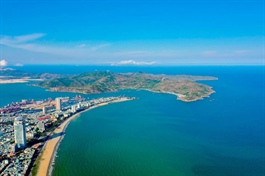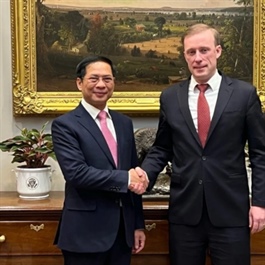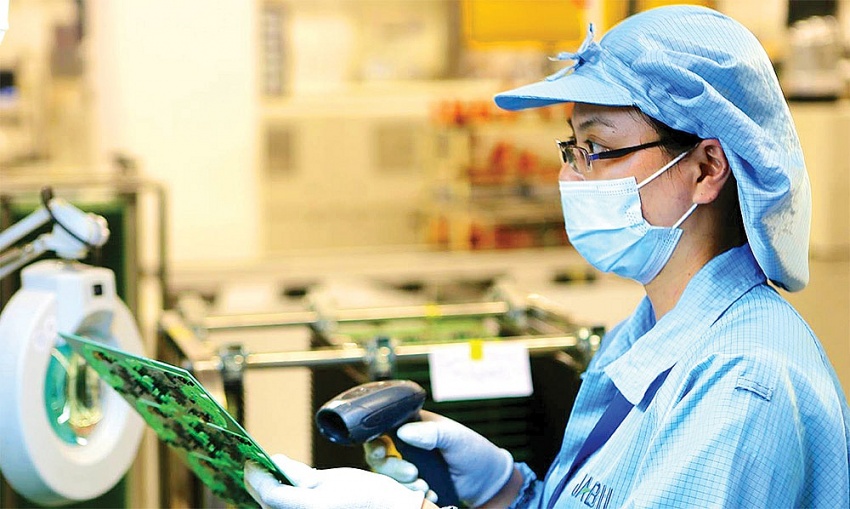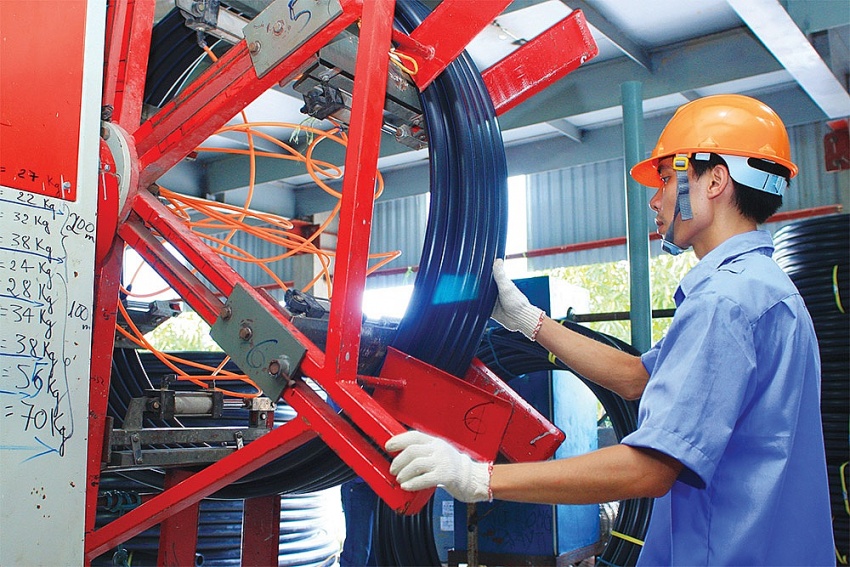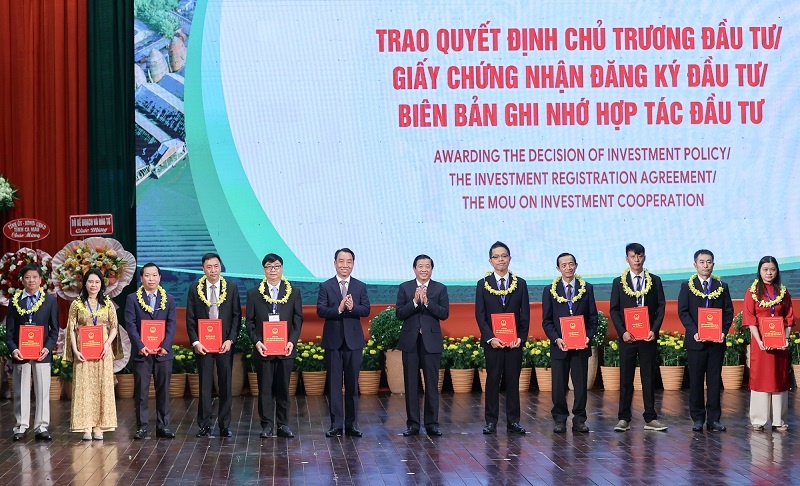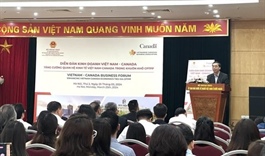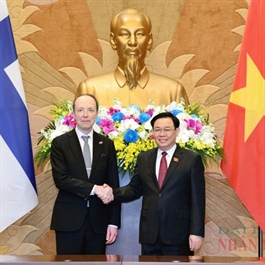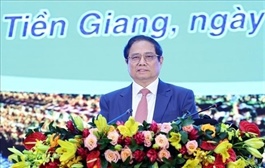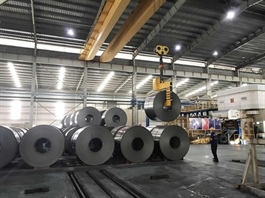Binh Dinh lays claim to regional investing spotlight
Binh Dinh lays claim to regional investing spotlight
Binh Dinh has emerged as a destination for domestic and foreign investors, with more positive signals expected via an investment promotion conference in the central province at the end of March.
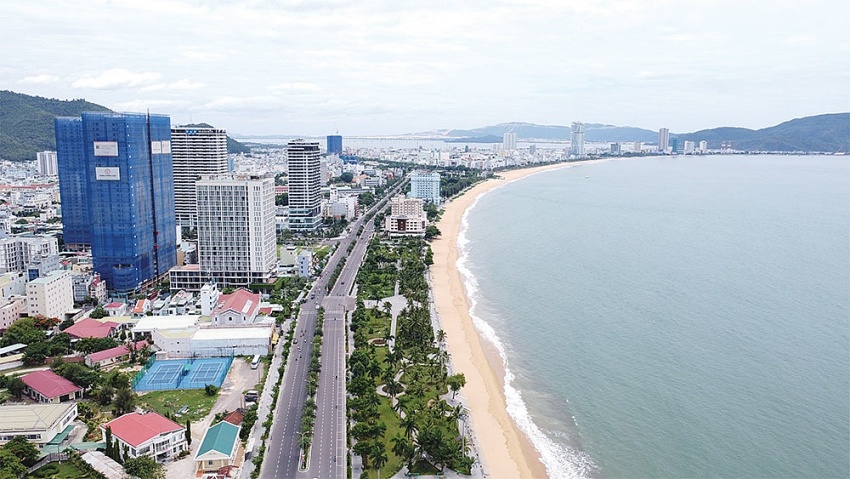
From the efforts and results of investment attraction achieved in recent years, Binh Dinh is increasingly showcasing its stellar position in the central coast and Central Highlands regions.
An upcoming investment promotion conference on March 29 is being deemed a promising forum to gather new and potential financial backers to Binh Dinh in the near future, according to provincial leaders.
It follows hot on the heels of the December unveiling of the province’s official planning, at which Binh Dinh People’s Committee gave the green light to over 20 projects worth over $540 million in total.
In particular, Nguyen Bay, director of Binh Dinh Investment Promotion Centre, said that Binh Dinh People’s Committee has recently worked with many businesses in the United Arab Emirates, such as Supercool Company, DMCC Group, Ghassan Aboud Group, and GBE Prime Group.
“Along with that, Binh Dinh has worked with visitors from embassies, consulates, and business delegations of such countries as Japan, China, Belgium, Canada, Germany, Italy, and the United States,” Bay said. “The locality also organised many provincial promotion campaigns in the likes of Thailand, South Korea, Canada, the US and more to celebrate investment, trade, and tourism promotion activities and attempt to engage with more foreign capital inflows.”
Exploiting potential
Binh Dinh is located at the midpoint of the North-South railway and road transport axis and is the closest gateway to the sea in the Central Highlands region, southern Laos, northeast Cambodia, and Thailand.
With its planning strategy towards 2030, Binh Dinh aims to become a developed province for the region, and targets being a southern centre for processing, manufacturing, services, tourism, and culture.
In particular, Binh Dinh strives to be a major centre of the country for marine economic development, and a key national and international tourism centre with a synchronous and modern economic infrastructure system.
Ho Quoc Dung, Secretary of Binh Dinh Party Committee, declared that to achieve the set goals, the province needs to rely on the pillars of industrial growth, tourism services, seaports and logistics, high-tech agriculture, and urbanisation.
“For urban development, we will focus on developing a modern Quy Nhon urban area in terms of space and architecture, exploiting the potential and special advantages of the landscape and climate in the area along Thi Nai Lagoon,” Dung said. “At the same time, Binh Dinh will plan to build a new administrative centre of the province in Nhon Hoi Economic Zone and develop a national scientific urban area.”
According to Deputy Prime Minister Le Minh Khai, Binh Dinh’s planning has been built with breakthrough thinking, long-term vision based on distinct potential, outstanding opportunities, and competitive advantages.
“To successfully implement the plan, the province is required to continue to strongly improve the business investment environment, with a focus on creating a breakthrough in administrative procedure reform, creating an open, transparent, and equitable business environment, creating better conditions for businesses to set up projects,” DPM Khai emphasised.
Khai also stated that the plan will open up new opportunities and development space for Binh Dinh, and is expected to create new impetus for it to “create a miracle” in socioeconomic development.
From an expert perspective, Dr. Tran Dinh Thien, former director of the Vietnam Institute of Economics, assessed that the plan will build Binh Dinh into a “world-class destination and the region’s leading destination”.
“This planning is a particularly effective tool to entice investment and help Binh Dinh create a development breakthrough in its efforts to get ahead,” Thien said.
Economist Tran Du Lich, however, said that while building plans can difficult, actually realising them can be much more complex. To realise Binh Dinh’s aims not only for 2030 but also towards 2040, the province needs to solve a raft of issues that will requires the government’s support in policymaking.
“The most important thing is that the government soon plans and directs investment in Quy Nhon-Gia Lai Expressway, of which phase 1 is the Quy Nhon-Pleiku section. Then, it is necessary to take advantage of the marine economic zone, as industrial development is the key to create a breakthrough,” said Lich.
Welcoming the wave
In 2024, Binh Dinh People’s Committee assigned a target of attracting 100 projects. Of which, Binh Dinh Department of Planning and Investment attracted 70 new ones, and Binh Dinh Economic Zone Management Board attracted the remainder. At the same time, Binh Dinh guaranteed 1,000 newly established businesses valued at $416.7 million.
Le Hoang Nghi, director of Binh Dinh Department of Planning and Investment, said that the locality will continuously review the list of projects calling for funding, and additional adjustments will be made to remove initiatives that already have investors or are not feasible.
“At the same time, the province will collect, update, adjust, and supplement projects calling for investment, build a database and provide information on attractive policies, and introduce and hold connection activities.” Nghi said.
According to Nghi, the locality is proactively seeking investment from large and reputable financiers in the EU, the US, Japan, and South Korea. “In 2024, the province will invite reputable organisations such as the commerce chambers from Europe, Japan, the US, and others to conduct field surveys in the province, thereby serving as a bridge to potential investors around the world,” Nghi said.
Pham Anh Tuan, Chairman of Binh Dinh People’s Committee, said that in addition to promotion by the local authorities, the province also requires industrial parks (IPs) and clusters in the area to proactively draw in investors.
According to Tuan, the province requires Becamex Binh Dinh JSC to allure at least 15 projects, with each being worth at least $4.15 million; Hoa Hoi IP and Nhon Hoi A IP attract 10 ventures of the same value. For industrial clusters, 2-3 projects must be attracted, with each valued at no less than $1.25 million.
“We must focus on having large, key initiatives, because they will fundamentally change the province’s prospects. For example, they could be wind power schemes, port system projects, or new production such as steel factories,” Tuan said.
In 2023, Binh Dinh attracted six newly registered foreign-invested projects, capitalised at more than $46 million. It adjusted five projects, with a total capital increase of $46.5 million. To date, the province boasts 91 foreign-led schemes, with the total registered capital of $1.2 billion.
Regarding domestic investment, Binh Dinh last year attracted 79 projects worth of more than $640 million. Including both domestic and foreign investment, Binh Dinh attracted 85 new ventures with the registered capital of more than $685 million, over 40 per cent higher than the plan assigned in early 2023. The province also adjusted 64 projects (five foreign-invested ones) with the additional capital of more than $145 million.



